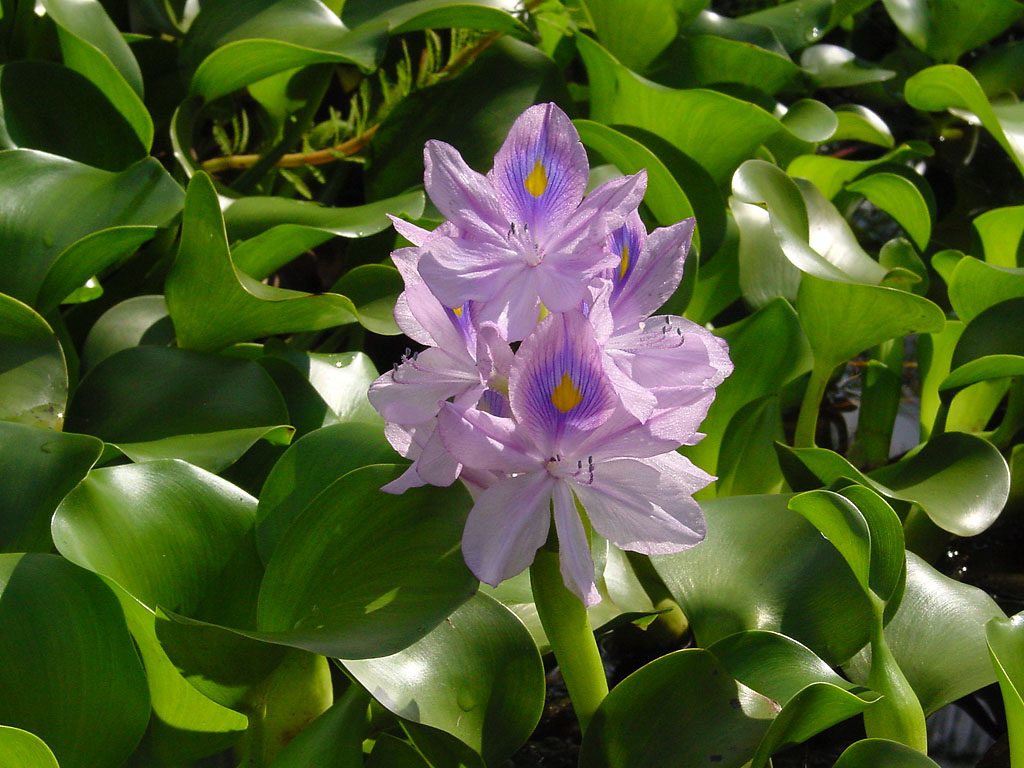Why Americans Were Almost Hungry Hungry for Hippos


The flower above is the water hyacinth, and while it looks pretty, it’s often regarded as an invasive species. Originally native to the tropical and sub-tropical regions of South America, the aquatic plant has made its way to other areas around the world. It grows quickly, spreads rapidly, and can last decades.
And it can be a menace. Need proof? Below, via Wikipedia, is a picture of Lake Victoria’s Kisumu Harbor in Kenya, and, as you can see — or, can’t see, as it turns out — there’s not a lot of water visible. That’s because the water hyacinth has taken over. For both the ecosystem and the local economy, that’s bad.

In 1884, the water hyacinth made its way to the United States. Louisiana was hosting the World’s Fair that year and some well-meaning Japanese visitors brought the lavender-colored flower as a gift. It didn’t work out well for locals, though. The hyacinth made its way into bodies of water in the area, taking over. Eventually, the plant was “choking rivers, killing fish and stopping shipping in Louisiana” per Wikipedia, and spreading to Florida.
Shortly thereafter — we’re in the first decade of the 1900s by now — America was in the midsts of a meat shortage. The problem was unrelated to the water hyacinth invasion, but it was significant. The American population had exploded but the country couldn’t keep up with the food needs of the growing country. More food — more meat, in particular — was needed.
The solution to both of these problems? Enter one of Lousiana’s members of the House of Representatives, a lawyer named Robert F. Broussard. In 1910, he proposed H.R. 23621, or as it later became known, theHippo Bill.
The Hippo Bill and its history is outlined meticulously in a 90-minute article on the Atavist (which you really should read), but for those who want a boiled down version, the author of the article, Jon Mooallem, sat down with Wired a few years back. Per Mooallem, “Broussard decided he could solve the water hyacinth problem by bringing in hippos to suck up the plants, “as the aquatic mammals are voracious eaters. But it went beyond that. Mooallem continued “the idea was that you could harness land that wasn’t productive for grazing cattle, like swamps and bayous. So you’d transplant the hippos into these environments that aren’t totally unlike where they live in Africa. You could suck up all the energy in what looks like a wasteland and turn it into meat.” In pay for all these hippos, H.R. 23621 appropriated $250,000 for their import, according to Scientific American — and a menu item known as “lake bacon” would have swept across the company.
And yet, you’ve probably never eaten lake bacon. That’s because Mooallem’s bill — despite having the support of Theodore Roosevelt — never made it into law. It failed to pass the House by one vote. As a result, we don’t eat hippo — and water hyacinth are still flooding waterways throughout the bayou.
Bonus fact: Hippos live in the water and can get around a lake, but they can’t swim — and they don’t particularly float all that well, either. Rather, as the Atlantic explains, they walk, kind of. As Douglas McCauley, a professor of ecology at the University of California, Santa Barbara, told the Atlantic, the hippo “almost always maintains some contact with the bottom and walks or bounces off the bottom using these bottom contact points as a source of propulsion.” That may seem familiar to anyone who has ever walked through a swimming pool — we can get around doing the same thing, although it’s hardly efficient. The hippo has two advantages over humans, though. First, they have twice as many feet, which makes it easier to bounce; and second, again per the Atlantic, hippos “can remain submerged for up to 30 minutes.”
From the Archives: Hippo in the Sun: The surprising benefits of hippo sweat (especially if you’re a hippo).
Related: Hungry Hungry Hippos, the classic board game, and Hippos Can’t Swim, the not-quite-as classic (but accurately-titled) children’s book.
